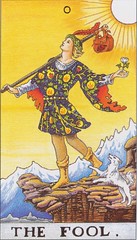Last year I wrote an article about Lulu and in the title for that article I suggested; 2010 May Be The Time For Lulu To Drop The Self From Self-Publishing. At the end of that article I wrote the following as an explanation as to what I meant. On reflection, and in light of the following Lulu Forum posting by author Julie Ann Dawson, which today was cross-posted by Emily Veinglory on POD People, I would like to expand on that original article I posted here in January.
Having re-read the post again today, I think there is a danger in believing I was being somehow entirely supportive of the direction Lulu where taking their marketplace and business as a whole. If anything, I have subsequently being calling for Lulu to get back to the core values of what they are; a DIY self-publishing services company – at least that is how I still see them – but their recent attempt at diving into the Canadian stock market in an effort to raise investment finance may suggest something quite different.
Here is what I wrote at the end of my article in January:
Indeed, and that movement and protection under the umbrella of publishing is what Lulu is quickly trying to embrace by expanding their marketplace to include mainstream books for purchase, as well as recently trumpeting the arrival of John Edgar Wideman, presented as the exasperated renegade from the traditional world of publishing. It is this fairytale renegade story of disillusioned author that Lulu wants to sell us. Wideman is among the self-publishing masses – equal in our kindship of self-publishing and its empowerment. For the most part, Lulu still remain in the business of selling self-publishing services, but authors crossing over the self-publishing/publishing divide are what helps Lulu sell their services to the ordinary masses.
Referencing The Last Song for points:
Preferential pricing: This is a 413 page book, selling for $10.94. Do you know what my cost to print a 413 page book is? $12.76! It costs me almost $2 more to print than this book sells for! And if I went through retail with the book, with NO ROYALTY the book would sell for $19.52. WTF!!!???
Preferential tools: Notice that this book has a “retail” price and a sale price? Well, I have been asking for this FOR YEARS for US, and Lulu has systematically refused, claiming that they couldn’t let us sell the books on Lulu for less than what the book retails for due to contractual agreements with Amazon and other vendors. I think this proves beyond a shadow of a doubt Lulu was LYING."
The example Dawson gives in her forum posting on Lulu is Nicholas Sparks’ The Last Song. Dawson comments; ‘How the books get printed is of no concern to me.’ Well, actually, it should, because it would explain why your 413 page book retails at $19.52 and Sparks’ book retails at $10.94. Lulu have a deal with Ingram as their ‘available’ distributor for POD books, but The Last Song is published by mainstream publisher Grand Central Publishing, and you can bet your bottom dollar it ain’t being printed POD, but rather sourced from printed stock Ingram hold in a warehouse for Grand Central. And that will be likewise for all books from mainstream publishers Lulu has in its marketplace. So, yes, we can go on comparing apples with oranges, but they will always be uniquely apples and oranges.
All authors are equal, just some are more equal than others!
If you think Lulu see all their authors in the same light; think again. This is akin to DellArte Press authors (Harlequin’s self-publishing service) thinking they are operating in the same field of publishing dreams as all of Harlequin’s traditionally contracted authors. The Lulu VIP program offers everything to try and lure an established author to the lulu brand, every turn of the drive shaft and spark from the Lulu engine—pre-production and post-publication—is being directed towards the sale of the author’s book. It is notable that the press release to go with the book was not released by Wideman, but Lulu themselves. While Lulu right now needs Wideman more than he needs them, there is no doubt in my mind; the experimental nature of Wideman’s Briefs made it a difficult sell to Houghton Mifflin, and as the author freely points out, he is no writer of literary blockbusters."
There is a dichotomy at the heart of this discussion, and it can lead us to make an inaccurate assumption about self-publishing and mainstream publishing. Lulu has taken a step closer to the traditional world of publishing by taking on the wider marketplace, and the traditional world of publishing has begun to re-evaluate its own publishing models and taken a step closer to embracing some of the components of the self-publishing fraternity. Some might say never the twain shall meet, but it is discussions like this which come from the inevitable collision and consummation of all publishing into one entity. We are seeing the Lulu marketplace as a platform where self-published author collides with traditional author. The glare of the headlights shows us that an author is an author and a published book is a published book. It is just that some authors and their books are more equal than others. There is nothing new in this – it has being going on in the traditional world of publishing for decades.
No publisher or agent, in their heart of hearts, believes all their authors are equal. They may humanly treat them as equals, but as business people they will not act equally and accordingly.
It is time we all took the self from self-publishing.
How many are really up for that journey?
This is a cross-posting from Mick Rooney‘s POD, Self Publishing and Independent Publishing blog.


